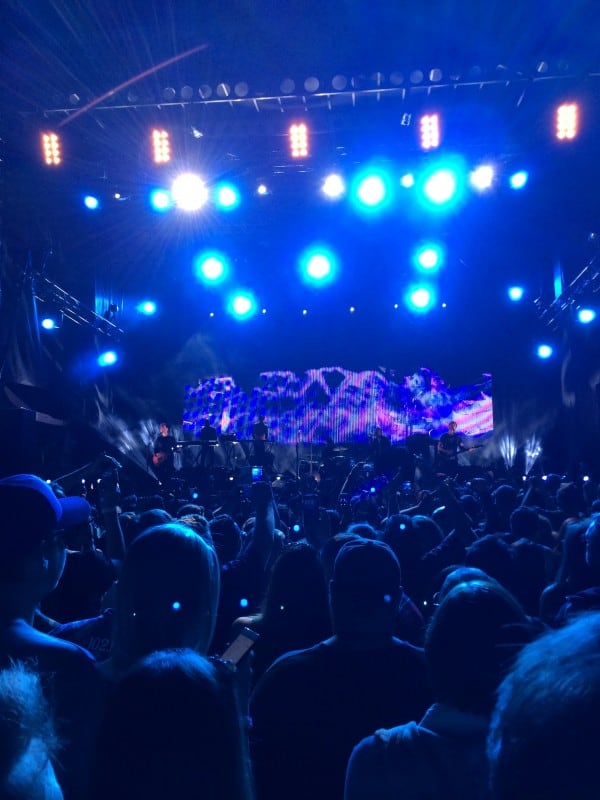I am currently sporting some brutal sunburns that I will wear as temporary battle scars to proudly proclaim: “I attended Riot Fest Toronto.”
Originating nine years ago in Chicago, Riot Fest began as a single city music festival consisting mostly of punk rock acts like The Misfits and Dead Kennedys. Over the years, Riot Fest introduced alternative genres to the stage, and in 2012 expanded to feature larger venues and multiple city stops. Now in 2014, it has made its way to Toronto — carnival decorations, wrestling rings and all.
Arriving shortly after noon the first day, the first band I heard was the unmistakably Canadian group, Mounties. This newly formed Toronto super group, features band members from Hot Hot Heat and Limblifter, impressed the early afternoon crowd with great live renditions of “Tokyo Summer” and “Headphones,” two of their most exhilarating tunes.
Anyone who stood in the grass fields closest to the stage was made well aware of the festival’s rain-or-shine mentality, as the fields of Downsview Park had been reduced to a muddy swamp thanks to a thunderstorm the night prior. The mud, along with my last outing to Downsview involving my girlfriend getting trapped in a Weezer mosh pit, left me happy to lay back and enjoy the music from afar.
Part of the fun of big festivals like Riot Fest is in allowing yourself to discover new music with the comfort of knowing it won’t be too far off from the groups you already love. Rubblebucket, a talented Brooklyn band I had never heard of, was a great reminder of this. Trumpets, trombones, a baritone sax wielding lead singer, along with plenty of crowd interaction and what appeared to be a dancing, anthropomorphic donut made for a great live show.
Staying true to its roots, Riot Fest also featured many punk rock groups from the mid-2000s, such as Taking Back Sunday (TBS), and New Found Glory. Personally, I’ve felt as though groups like this have struggled to transition successfully out of the 2000s. When I saw TBS in 2009 and heard their new music, it struck me that they were having an identity crisis by trying to find a balance between new and old sounds. Riot Fest allows fans of groups like these to hop in a musical time machine and embrace them the same way they might have ten years ago. I, for instance, loved TBS’s set, but had no desire to see them live if they weren’t part of the festival lineup.
Heavy hitters like Billy Talent and The Cure closed out Saturday’s festivities and left fans happy and anxious for the next day.
For the most part, Sunday’s lineup took a step away from heavier, punk-oriented groups in favour of more alternative artists. Tokyo Police Club, who had performed during U of T frosh week days earlier, provided a noticeably more upbeat set than the appropriately titled Riot Fest would have you imagine. I was happy to see that these admittedly lighter songs had time to resonate with the audience.
Indie folk group The Head and the Heart provided a necessary break from distortion-heavy groups like the Dropkick Murphy’s and Social Distortion with their harmony and violin fuelled set. Alternative heavy hitters The National, Metric, and City and Colour were the big names to close out the festival. Of the three, I was most impressed by The National, falling for the unbelievable vocal performance by frontman Matt Berninger during songs like “Graceless” and “Mister November.”
What resonates with me most about Riot Fest Toronto is the impressive amount of generations represented by the festival lineup. Modern musicians like Stars and Pup appeased the younger crowd, 2000s throwbacks like Alkaline Trio and Rise Against were present for those who were a bit more nostalgic, and punk classics like Social Distortion, Buzzcocks, and the Cure were around for seasoned veterans. This American-originated music festival’s infiltration of the Canadian border is one that is as justified as it is welcome.



